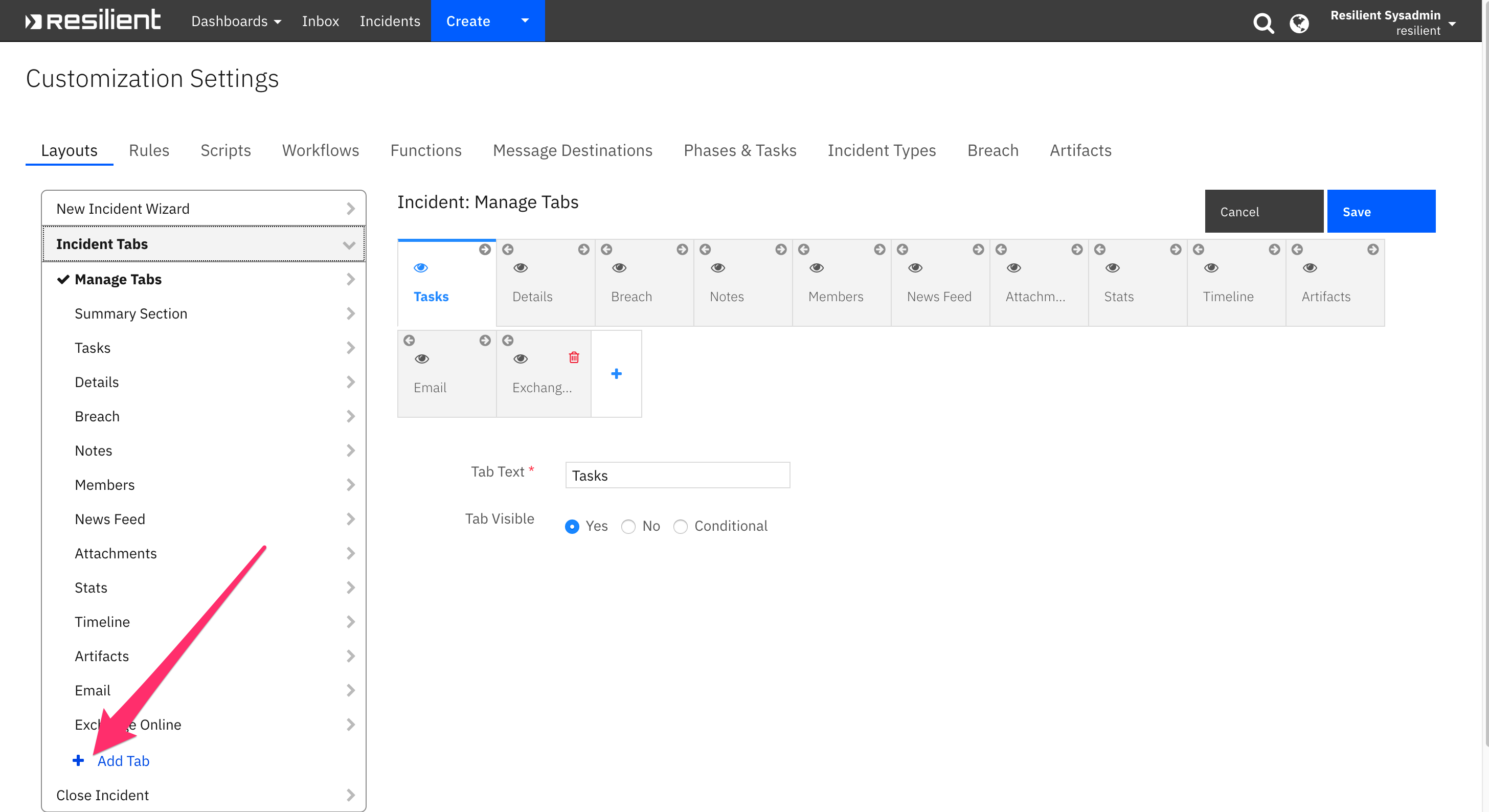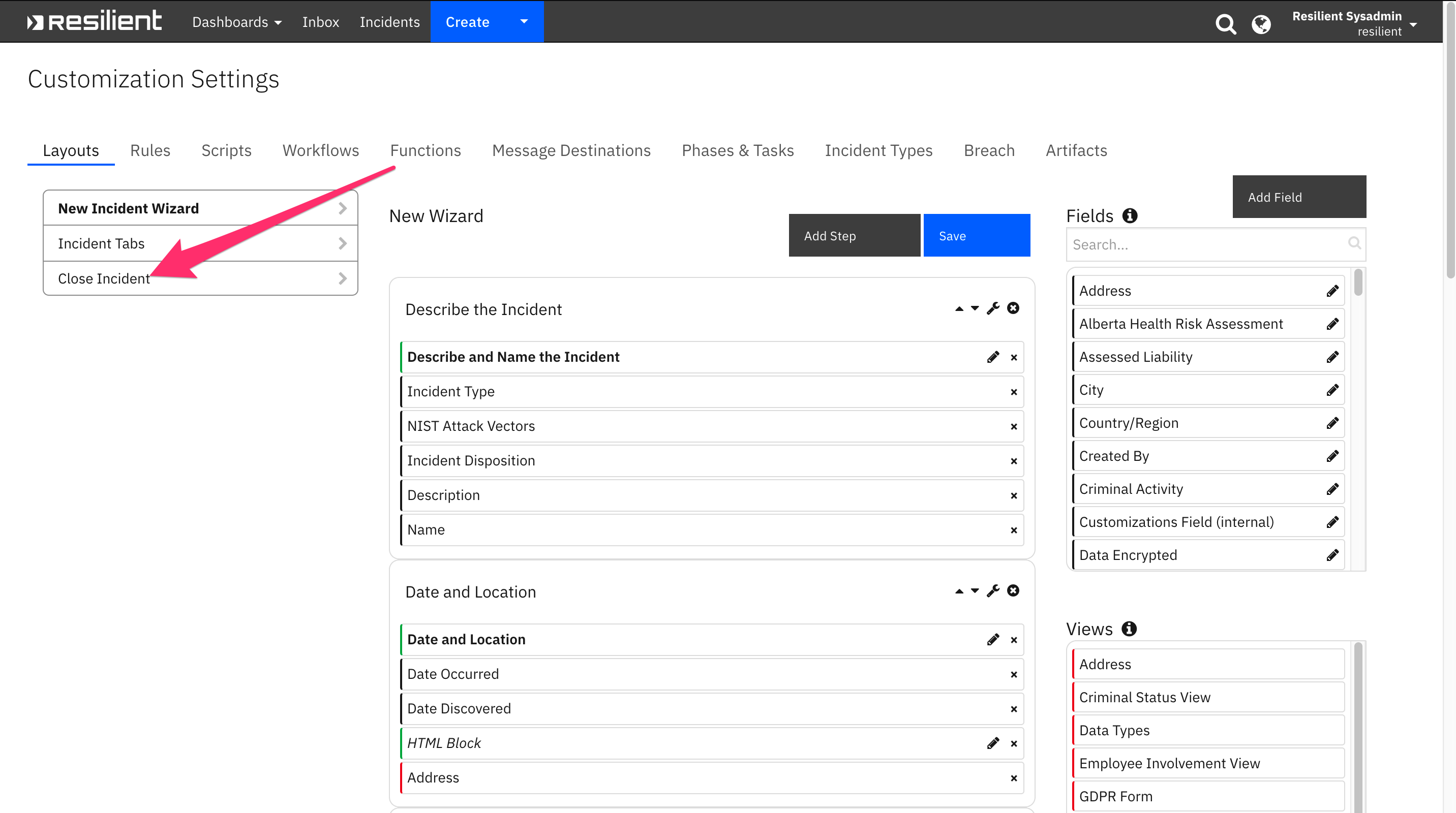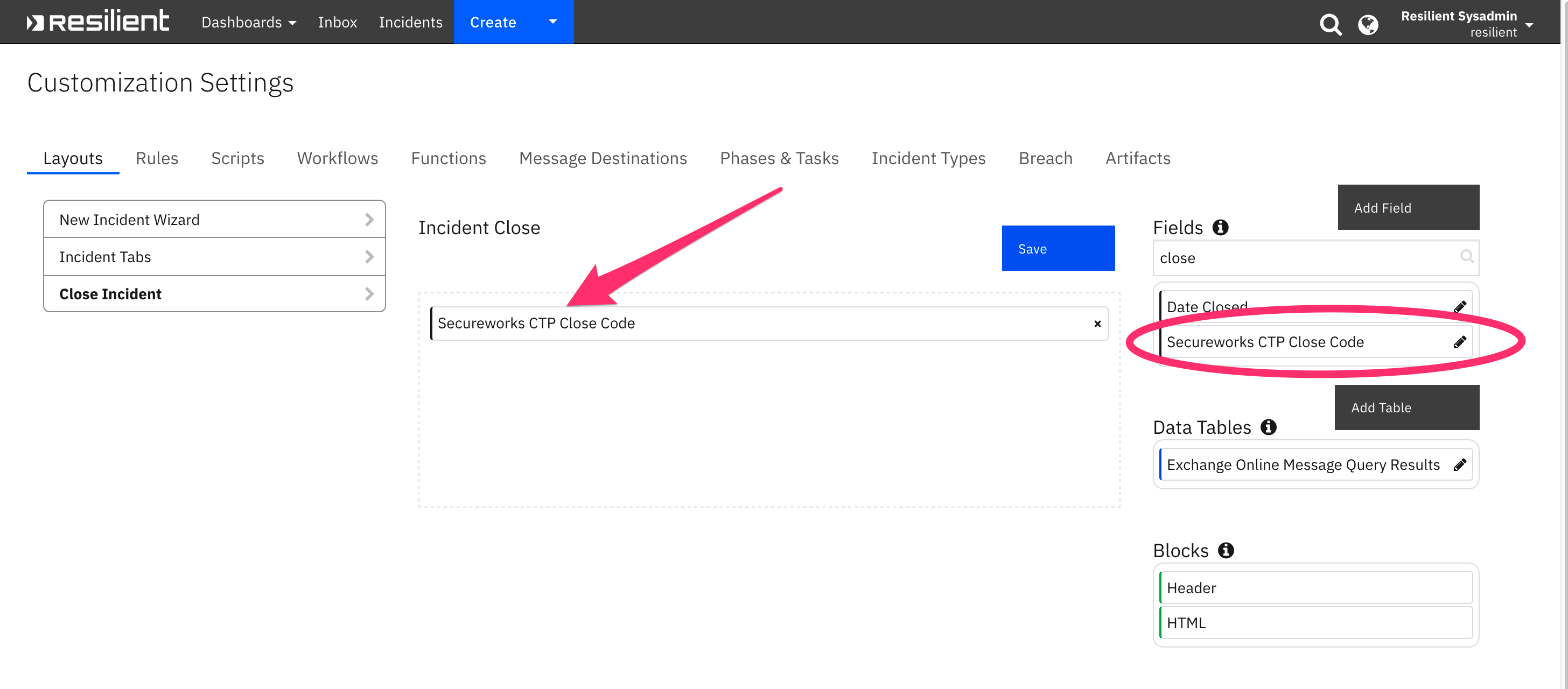Secureworks CTP¶
Release Notes¶
v1.0.0¶
Initial Release
Overview¶
The Secureworks Counter Threat Platform (CTP) uses the global visibility gained from gathering and analyzing data from clients all over the world to more accurately identify, contain and eradicate cybersecurity threats. By combining up-to-the-minute threat intelligence with the CTP's machine learning and analytics capabilities, organizations can make faster, more informed decisions about how to predict, prevent, detect, and respond to threat activity.
CTP is used with the Secureworks SOC team when they find a security issue that needs to be communicated to the customer. The issues can be informational, research-based or require proscriptive actions by the customer. Secureworks CTP provides a “ticket-like” interface that allows you acknowledge, add files and notes, and provide ability to close tickets.
The Secureworks CTP integration implements the following functionality in Resilient:
Poll Secureworks CTP for tickets and create a corresponding incident in the Resilient platform for each ticket.
Get Secureworks CTP ticket workLogs and attachments and add them as notes and attachments in the corresponding Resilient incident.
Close a Secureworks CTP ticket when the corresponding Resilient incident is closed.
Close a Resilient incident when the corresponding Secureworks CTP ticket is closed in Secureworks.

Requirements¶
Resilient platform >=
v35.0.5445An Integration Server running
resilient_circuits>=30.0.0To set up an Integration Server see: ibm.biz/res-int-server-guide
If using API Keys, minimum required permissions are:
Incidents: Read, Create
Edit Incidents: Fields, Notes
Org Data: Read, Edit
Functions: Read
Installation¶
App Host¶
All the components for running this integration in a container already exist when using the App Host app.
To install,
Navigate to Administrative Settings and then the Apps tab.
Click the Install button and select the downloaded file: app-fn_secureworks_ctp-x.x.x.zip.
Go to the Configuration tab and edit the app.config file, editing the username and password for Secureworks CTP and making any additional setting changes.
Config
Required
Example
Description
base_url
Yes
https://api.secureworks.com/api/ticket/v3Secureworks CTP base URL
username
Yes
user@example.comemail address associated with Secureworks account
password
Yes
``
password associated with Secureworks account
query_ticket_grouping_types
Yes
INCIDENT:SECURITYComma separated list of ticketType:groupingType pairs indicating ticket and grouping types to query. Secureworks ticketTypes : SERVICE_REQUEST, INCIDENT, CHANGE. Secureworks groupingTypes: REQUEST, CHANGE, HEALTH, SECURITY
query_limit
Yes
10Maximum number of tickets to be returned from Secureworks API query
polling_interval
Yes
600Time in seconds between queries to Secureworks endpoint
close_codes
No
Authorized Activity,Confirmed Security Incident,Duplicate,Incident Misidentified,Inconclusive,Not Actionable,Not Vulnerable,Threat MitigatedComma separated list of close codes to override the defaults
template_file_escalate
No
``
Path to a custom jinja template file used to escalate a Secureworks Ticket to Resilient
template_file_close
No
``
Path to a custom jinja template file used to close a Resilient incident when the corresponding ticket is ‘Closed’ or ‘Resolved’ in Secureworks
template_file_update
No
``
Path to a custom jinja template file used to update incident fields of a Resilient incident when the corresponding ticket is updated in Secureworks
cafile
No
``
Path to certificate file
Integration Server¶
Download the
fn_secureworks_ctp.zip.Copy the
.zipto your Integration Server and SSH into it.Unzip the package:
$ unzip fn_secureworks_ctp-x.x.x.zip
Change Directory into the unzipped directory:
$ cd fn_secureworks_ctp-x.x.x
Install the package:
$ pip install fn_secureworks_ctp-x.x.x.tar.gz
Import the configurations into your app.config file:
$ resilient-circuits config -u -l fn-secureworks-ctp
Import the fn_secureworks_ctp customizations into the Resilient platform:
$ resilient-circuits customize -y -l fn-secureworks-ctp
Open the config file, scroll to the bottom and edit your fn_secureworks_ctp configurations:
$ vi ~/.resilient/app.config
Config
Required
Example
Description
base_url
Yes
https://api.secureworks.com/api/ticket/v3Secureworks CTP base URL
username
Yes
user@example.comemail address associated with Secureworks account
password
Yes
``
password associated with Secureworks account
query_ticket_grouping_types
Yes
INCIDENT:SECURITYComma separated list of ticketType:groupingType pairs indicating ticket and grouping types to query. Secureworks ticketTypes : SERVICE_REQUEST, INCIDENT, CHANGE. Secureworks groupingTypes: REQUEST, CHANGE, HEALTH, SECURITY
query_limit
Yes
10Maximum number of tickets to be returned from Secureworks API query
polling_interval
Yes
600Time in seconds between queries to Secureworks endpoint
close_codes
No
Authorized Activity,Confirmed Security Incident,Duplicate,Incident Misidentified,Inconclusive,Not Actionable,Not Vulnerable,Threat MitigatedComma separated list of close codes to override the defaults
template_file_escalate
No
``
Path to a custom jinja template file used to escalate a Secureworks Ticket to Resilient
template_file_close
No
``
Path to a custom jinja template file used to close a Resilient incident when the corresponding ticket is ‘Closed’ or ‘Resolved’ in Secureworks
template_file_update
No
``
Path to a custom jinja template file used to update incident fields of a Resilient incident when the corresponding ticket is updated in Secureworks
cafile
No
``
Path to certificate file
Save and Close the app.config file.
[Optional]: Run selftest to test the Integration you configured:
$ resilient-circuits selftest -l fn-secureworks-ctp
Run resilient-circuits or restart the Service on Windows/Linux:
$ resilient-circuits run
Uninstall¶
SSH into your Integration Server.
Uninstall the package:
$ pip uninstall fn-secureworks-ctp
Open the config file, scroll to the [fn_secureworks_ctp] section and remove the section or prefix
#to comment out the section.Save and Close the app.config file.
Custom Layouts¶
Customize Secureworks CTP and Close Incident Layouts to provide Secureworks specific information in the Resilient UI.
Secureworks CTP Layout Tab¶
Create a Secureworks CTP custom incident tab so that you can view Secureworks CTP ticket information in one place.
Go to the Customizations Settings -> Layouts tab.
Click the Incident Tabs menu item on the left.
Click the Add Tab button.
Enter Secureworks CTP in Add a Tab popup and click Add.

Next, search for the Secureworks CTP (scwx) custom incident fields in the Fields search bar.
Drag Secureworks custom incidents fields on to the layout in the center of the screeen.
Click Save.

Close Incident Layout Tab¶
Modify the Close Incident tab so the the Secureworks close code can be selected from the Close Incident popup from Resilient.
Go to the Customizations Settings -> Layouts tab.
Click the Close Incident menu item on the left as shown in the screenshot below.

Next, search for the Secureworks CTP Close Code custom incident fields in the Fields search bar.
Drag the Secureworks CTP Close Code onto the Close Incident layout tab.

Troubleshooting¶
There are several ways to verify the successful operation of a function.
Resilient Action Status¶
When viewing an incident, use the Actions menu to view Action Status.
By default, pending and errors are displayed.
Modify the filter for actions to also show Completed actions.
Clicking on an action displays additional information on the progress made or what error occurred.
Resilient Scripting Log¶
A separate log file is available to review scripting errors.
This is useful when issues occur in the pre-processing or post-processing scripts.
The default location for this log file is:
/var/log/resilient-scripting/resilient-scripting.log.
Resilient Logs¶
By default, Resilient logs are retained at
/usr/share/co3/logs.The
client.logmay contain additional information regarding the execution of functions.
Resilient-Circuits¶
The log is controlled in the
.resilient/app.configfile under the section [resilient] and the propertylogdir.The default file name is
app.log.Each function will create progress information.
Failures will show up as errors and may contain python trace statements.
Support¶
Name |
Version |
Author |
Support URL |
|---|---|---|---|
fn_secureworks_ctp |
1.0.0 |
Resilient Labs |
https://ibm.biz/resilientcommunity |